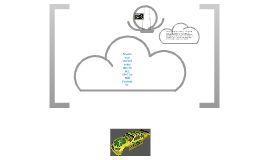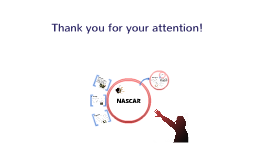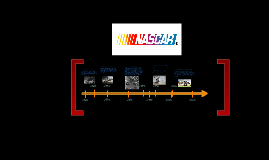nascar
Transcript: nascar this is a very dangerous sport! Nascar was started some time in dec. 1947 by Bill Francis Sr. The first NASCAR race was held on Daytona's beach course Feb. 15, 1948, just two months after the organizational meeting. Red Byron, a stock car legend from Atlanta, won the event in his Ford Modified. Six days later on Feb. 21, 1948, the National Association for Stock Car Auto Racing was incorporated. It's not often that stock car racing is called a game of inches. In the 2003 Carolina Dodge Dealers 400, it was all that and more. Ricky Craven won the race in a stunning, side-by-side, banging and grinding battle to the checkers with Kurt Busch at Darlington Raceway. The margin of victory was a scant two-thousandths of a second -- making it the closest race since NASCAR went to electronic scoring in 1993. Give an inch, get a win DARLILNGTON, S.C. (AP) -- The five closest finishes in the NASCAR Winston Cup Series since the current electronic timing and scoring System was instituted in 1993: .002 -- Ricky Craven beats Kurt Busch, Darlington Raceway, March 16, 2003. .005 -- Dale Earnhardt beats Ernie Irvan, Talladega Superspeedway, July 25, 1993. .006 -- Kevin Harvick beats Jeff Gordon, Atlanta Motor Speedway, March 11, 2001. .010 -- Dale Earnhardt beats Bobby Labonte, Atlanta Motor Speedway, March 12, 2000. .025 -- Jimmy Spencer beats Bill Elliott, Talladega Superspeedway, July 24, 1994. Craven started his charge to the front with 23 laps remaining. A lap later, Craven moved to second when Bud Pole Award winner Elliott Sadler lost ground when he hit the wall. Busch was the benefactor of an accident involved Jeff Gordon, which put him in the lead. Craven gained ground in each of the next 20 laps, pulling alongside Busch on two occassions with two laps left. Craven then took the lead when he bumped Busch's No. 97 Ford. It didn't take long for Busch to retaliate. He bumped past Craven in the second turn, almost sending Craven's No. 32 Ford into the wall. "When we got together in turn one, I don't know how he saved it," Craven said. "Then, I don't know how I saved it. That was wild." Busch retained the lead until the final turn of the race when Craven moved to the inside of Busch's car and the two started bouncing off each other and grinding toward the finish. Craven was in front at the end, though. His other victory came at Martinsville in October 2001. "I didn't realize there was only a couple of laps left, but I knew I had to get by him," Craven said. "If we had lost that race, it would have been devastating." Busch said without the power steering problem it would have been no contest. "It began cutting out on me with 50 (laps) to go and was completely gone in the last 10 laps," said Busch, who now has three runner-up finishes in five races this season. "There's no way he would have caught me, but that car felt like it weighed 10,000 pounds at the end. Without power steering, I couldn't feel the car." Still, the 24-year-old Busch gave it everything he had and nearly pulled it off. "Coming to the line I had my foot on the floor as hard as I could and I tried to hold the wheel as straight as I could," Busch said. "He was running out of racetrack. I mean, the excitement level within the car -- you have to block it out and you have to focus on what you have to do. "There was so much going on. My arms were numb, my brain was numb." Busch seemed just as thrilled as Craven by the dramatic finish. "It was awesome. That's what it's all about -- racing as hard as you can," said Busch, who also lost a close battle with Dale Jarrett last month in Rockingham. "I drove the Ford the best I could and came up a bit shy, I guess." Craven's race average was 126.214 mph, slowed by seven cautions for 34 laps. The Daytona 500 is one of the biggest annual races in Nascar.

















